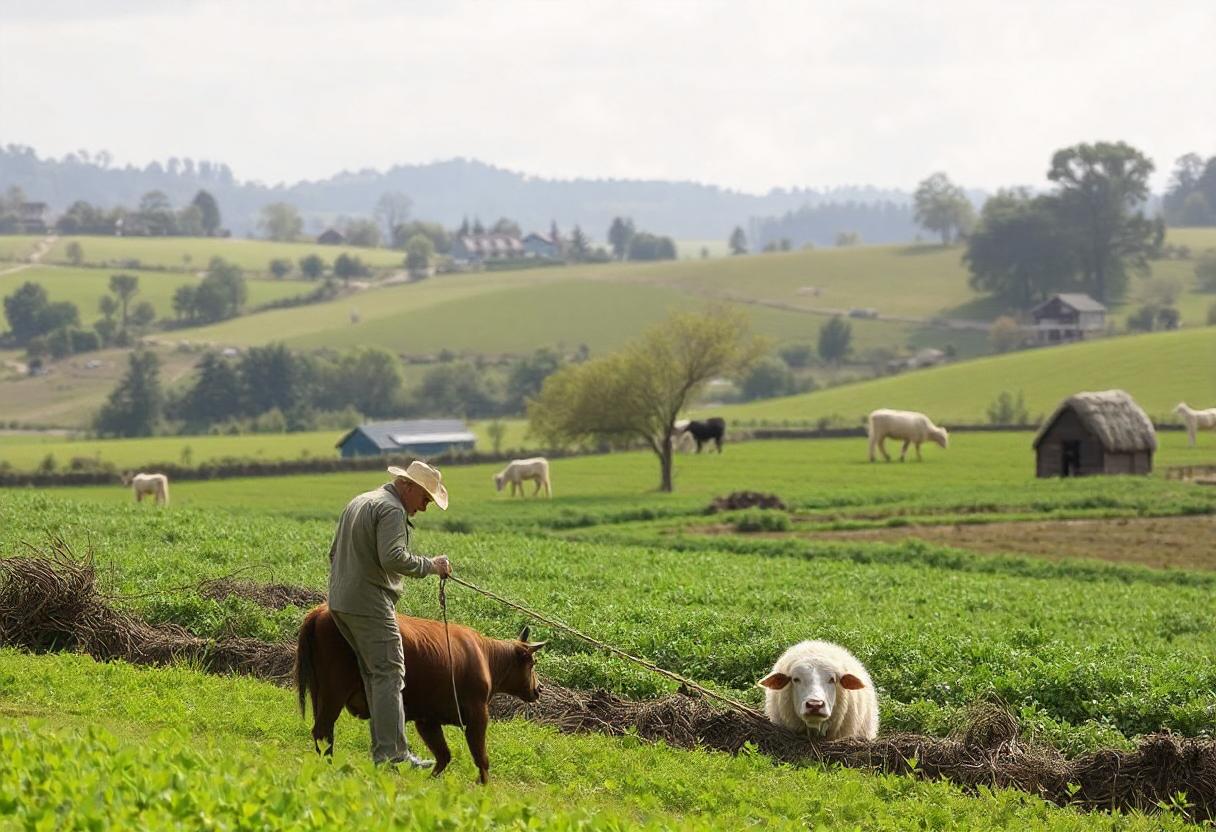
Farming, or agriculture, is a practice as old as human civilization itself. It has shaped the development of societies, economies, and environments throughout history. The evolution of farming reflects humanity’s journey from a nomadic existence to complex societies, showcasing innovation, adaptation, and resilience.
1. The Beginnings: Hunter-Gatherer Societies
In the Paleolithic era, humans were primarily hunter-gatherers, relying on hunting wild animals and foraging for plants. This subsistence lifestyle limited population growth and technological development. However, the end of the last Ice Age around 12,000 years ago set the stage for significant changes.
2. The Neolithic Revolution: The Birth of Agriculture
The Neolithic Revolution, starting around 10,000 BCE, marks the transition from nomadic hunter-gatherer societies to settled agricultural communities. This period saw the domestication of plants and animals in various parts of the world, including the Fertile Crescent, China, Mesoamerica, and the Andes.
- The Fertile Crescent: Located in the Middle East, this region saw the domestication of wheat, barley, peas, and lentils. The cultivation of these crops led to the establishment of the first permanent settlements.
- China: Early rice cultivation in the Yangtze River Valley and millet farming in the Yellow River Valley laid the foundation for Chinese civilization.
- Mesoamerica: The domestication of maize, beans, and squash in present-day Mexico and Central America supported the rise of advanced Mesoamerican cultures like the Olmec and Maya.
- The Andes: In South America, the domestication of potatoes and quinoa and the development of terrace farming were crucial for sustaining the Inca Empire.
3. The Agricultural Revolution: Innovations and Expansion
The Agricultural Revolution, beginning around 1,000 BCE and continuing through the Roman Empire, saw significant technological and methodological advancements.
- Iron Tools: The introduction of iron plows and sickles increased agricultural productivity. Iron tools were more durable and efficient than their bronze counterparts, allowing for the cultivation of tougher soils.
- Crop Rotation: The Romans developed early forms of crop rotation, planting different crops in succession to maintain soil fertility and reduce pest infestations.
- The Three-Field System: This system, prevalent in medieval Europe, involved rotating fields between crops and fallow periods to enhance soil productivity.
4. The Middle Ages: Farming in Feudal Societies
During the Middle Ages, farming practices were deeply intertwined with feudalism. The manor system, where peasants worked the land for local lords, dominated the European agricultural landscape.
- Heavy Plow: The introduction of the heavy plow, which could break up the tough northern European soil, significantly improved productivity.
- Windmills and Watermills: These innovations harnessed natural forces to grind grain and perform other tasks, reducing manual labor.
5. The Agricultural Revolution: 17th to 19th Century
The Agricultural Revolution of the 17th and 18th centuries transformed farming practices, setting the stage for the Industrial Revolution.
- Enclosure Movement: In Britain, the Enclosure Movement consolidated small plots of land into larger farms. This increased efficiency but displaced many small farmers.
- Selective Breeding: Farmers began selectively breeding livestock and crops to enhance desirable traits, leading to improved yields and productivity.
- Mechanization: The invention of machines such as the seed drill by Jethro Tull and the mechanical reaper by Cyrus McCormick revolutionized farming, increasing efficiency and output.
6. The 20th Century: Industrial and Green Revolutions
The 20th century witnessed profound changes in farming due to industrialization and technological advancements.
- The Green Revolution: Starting in the 1940s, this movement introduced high-yielding varieties of staple crops, chemical fertilizers, and pesticides. It significantly increased food production, particularly in developing countries.
- Mechanization: The use of tractors, combine harvesters, and other machinery became widespread, further increasing efficiency and productivity.
- Biotechnology: Genetic modification and biotechnology have led to the development of genetically modified organisms (GMOs), which offer resistance to pests and diseases and improve crop yields.
7. Contemporary Farming: Sustainability and Innovation
Today, farming faces the dual challenges of feeding a growing global population while minimizing environmental impact. Modern farming practices include:
- Sustainable Agriculture: Techniques such as organic farming, agroforestry, and conservation tillage aim to reduce environmental impact and promote soil health.
- Precision Agriculture: Utilizing GPS, drones, and sensors, precision agriculture allows farmers to monitor and manage crops with greater accuracy, optimizing resource use and reducing waste.
- Urban Farming: As urbanization increases, vertical farming and rooftop gardens are emerging as innovative solutions to produce food in city environments.
- Climate Change Adaptation: Farmers are adopting practices to mitigate and adapt to climate change, such as altering planting schedules, developing drought-resistant crops, and implementing water-saving technologies.
The history of farming is a testament to human ingenuity and adaptability. From the early days of crop domestication to today’s high-tech innovations, farming has continuously evolved to meet the needs of society. As we face new challenges in the 21st century, the lessons from history will guide us in developing sustainable and resilient agricultural practices for future generations.